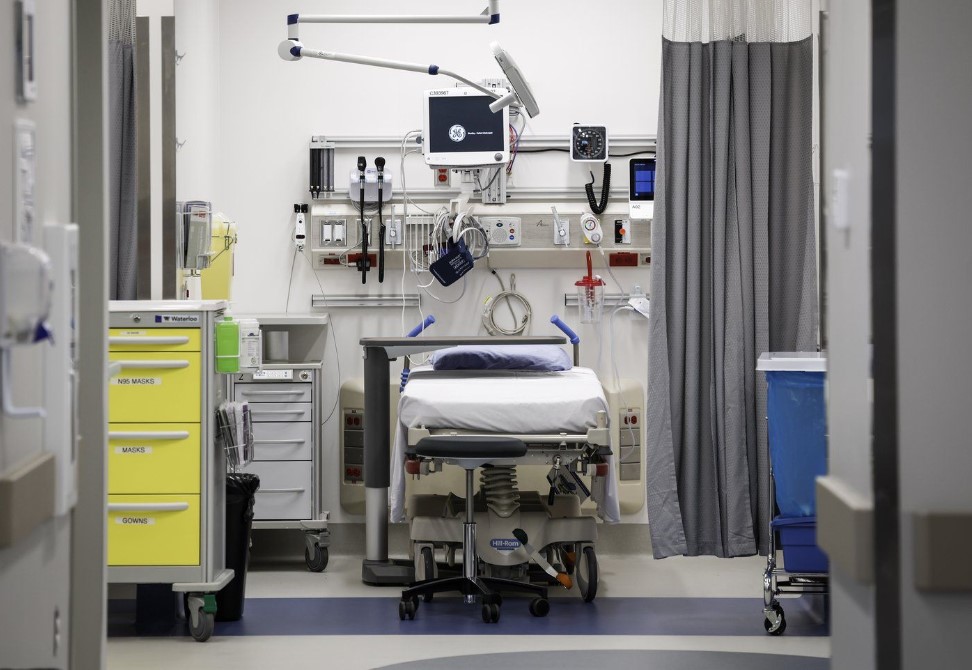People with diabetes in lower-income areas at higher risk for amputations: report

More than 7,000 people with diabetes undergo a leg, foot or toe amputation every year — and the majority of those procedures could have been prevented, the Canadian Institute for Health Information said in a report released Thursday.
The report said people with diabetes living in the lowest-income neighbourhoods are three times more likely to have an amputation than those living in the highest-income communities. Those living in remote communities were also at higher risk of amputations than people living in urban centres.
“Our report is looking at leg amputations that occur annually as a complication related to diabetes,” Erin Pichora, CIHI’s program lead for population health, said in an interview.
Advertisement
“We’re looking at these because they’re largely preventable.”
Lack of access to a primary-care provider to help people manage diabetes is one likely factor behind the inequalities, Pichora said.
Disparities are also likely in access to specialists who can treat diabetic wounds on people’s feet — including podiatrists and chiropodists — before they worsen, she said.
Diabetes Canada said CIHI’s report shows the importance of ensuring people with diabetes have equitable access to the care and resources they need.
“People living with diabetes who undergo amputations face significant emotional and financial distress,” Laura O’Driscoll, senior manager of policy at Diabetes Canada, said in an emailed statement to The Canadian Press.
Advertisement
“We need to ensure that everyone with diabetes has affordable, timely access to the medications, devices, education, and care needed to manage their condition and prevent complications like amputation.”
The CIHI researchers reviewed hospital records from across Canada for fiscal years 2020-2021 and 2022-2023 and found about 7,720 “lower limb” amputations associated with diabetes per year among people 18 and older.
Each year there were about 3,080 hospitalizations for “above-ankle” leg amputations and 4,640 hospitalizations for “ankle-and-below” amputations, including feet and toes.
Dr. Charles de Mestral, a vascular surgeon and scientist at St. Michael’s Hospital in Toronto who was a consultant on the report, said people living with diabetes are at risk of leg amputations for two reasons.
One is the nerve damage caused by diabetes, which means patients are unable to feel their feet and therefore aren’t aware if they get a wound so it worsens without treatment, he said.
Advertisement
The other reason is poor circulation or peripheral artery disease caused by diabetes.
“Nothing heals if it doesn’t have good blood flow,” de Mestral said.
He said he is often able to save patients from amputation by doing surgery to improve blood flow to the feet, but also has cases that involve a “life-threatening infection or debilitating pain” where removing the foot or leg is the only option.
Preventing wounds from happening in the first place — which can sometimes be as basic as wearing the right shoes or having calluses removed — is the most important way to prevent amputations, he said.
People with diabetes should check their feet every day, de Mestral said, and seek medical care if they see wounds starting to develop.
Advertisement
Because access to primary care, chiropodists, podiatrists and wound care nurses is inequitable in Canada, Dr. Nicole Woods is trying to develop other ways people with diabetes can have their feet examined regularly.
Woods, who is director of the Institute for Education Research at University Health Network in Toronto, said an estimated 80 per cent of lower limb amputations are preventable through proper screening.
”What we need to do as a system is address this inequitable access to screening,” she said.
In a research project funded by Diabetes Canada, Woods and her team are trying to train other people in the community besides doctors and nurses to screen people with diabetes for foot wounds.
Those can include personal support workers, family members and shelter workers, she said.
Advertisement
“It’s really just a matter of noticing an early wound, something that just needs to get looked at and recognizing it earlier,” Woods said.
“That’s something we can do for each other and for ourselves.”
